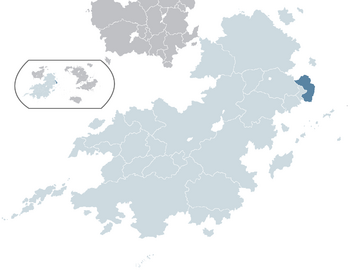Silberküste
Colony of the Silberküste Kolonie der Silberküste | |||||||||
|---|---|---|---|---|---|---|---|---|---|
| 1876-1952 | |||||||||
 | |||||||||
| Status | Weranian self-governing colony | ||||||||
| Capital | Sigismund | ||||||||
| Common languages | Weranic (official) Banu and Sisulu widely spoken, some Njinji and Maswana | ||||||||
| Government | Constitutional monarchy | ||||||||
| Monarch | |||||||||
• 1976-1913 (first) | Sigismund | ||||||||
• 1944-1952 (last) | Otto X | ||||||||
| Minister-President | |||||||||
• 1892-1896 | Horst von Ritter Hatzfeldt (first) | ||||||||
• 1947-1952 | Josef Dittmann (last) | ||||||||
| Legislature | State Diet | ||||||||
| History | |||||||||
• Creation of the colony | 14 June 1876 | ||||||||
• Self-governing status | 11 November 1892 | ||||||||
| 18 April 1952 | |||||||||
| Population | |||||||||
• 1902 | 1,205,764 | ||||||||
| Currency | Reichmark | ||||||||
| |||||||||
| Today part of | Tabora | ||||||||
The Colony of the Silberküste Weranic: Kolonie der Silberküste) commonly known simply as Silberküste (Silver Coast) was a self-governing colony of the Weranian Empire that existed from 1876 to the independence of the Republic of Tabora on the 18 April 1952. From the 11 November 1892 to its dissolution it was a self-governing colony that exercised significant autonomy within the Weranic Empire.
Formed after Kaiser Sigismund granted the Weranian East Bahian Company permission to annex the coast of East Bahia that had been dominated by the veRwizi Empire and smaller Banu tribal kingdoms in 1872. The trading outposts set up OBK were merged into the new colony known as the Silberküste due to the large amount of silver that was being extracted there with the Weranian government also promoting a policy of settler colonialism to the colony. A large amount of Weranian - predominantly poor farmers - emigrated to the colony where they often brought large areas of land from the colonial government at low prices leading to persistent cases of "land clearings" with Banu tribes driven from ancestral homelands. This led between the 1880's-1890's the Banu Wars a series of revolts by Banu tribes resistant to Weranic rule in the region.
In 1892 Werania passed the Law of Silberküste Self-Government which officially re-organised Silberküste as a self-governing colony with its own elected Landtag. The landtag could only be elected by property-owning white males, with the franchise expanded over time to include all white males by 1914. The colony received significant investment from the metropole with the white settler elite emphasising their "civilising mission" for the natives. This was most clear in the creation of the askari in 1901, who quickly were regarded as the most elite of the Weranian colonial troops. During the Great Collapse a huge wave of Weranic settlers emigrated to the colony bolstering its population and creating a settler colonialist nationalist identity implementing more stringent polices of segregation.
During the Great War the colony came under Gaullican occupation, albeit the role of askari defending the colony was heavily emphasised in Weranian propaganda. In the post-war period a third wave of settlers came to colony that led to more land clearing operations. Under the white supremacist government of the Unionist Party segregation measures increased sparking the Taboran War of Independence...
In 1952 the colony became independent with a large wave of white emigration from the colony...

